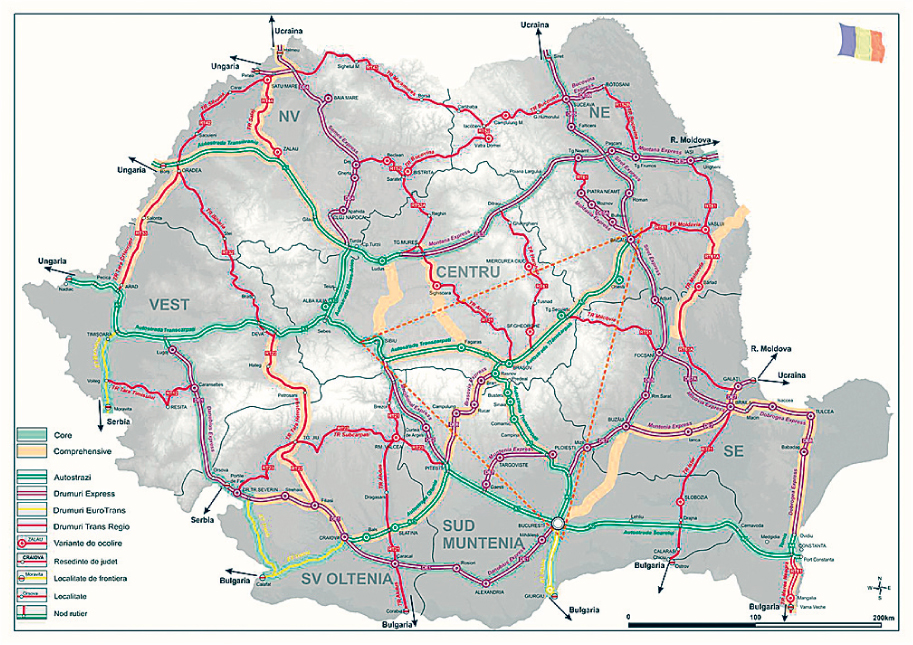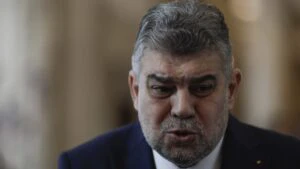In an interview for Capital, the minister Ioan Rus maintains that it is very important for Romania that its road infrastructure projects are started, or we will find ourselves back in the situation where all we do is talk, and not act.
CAPITAL: Many things have been said and written lately about the General Master Plan for Transport (MPGT in Romanian). This subject has been more central than others. Why is it so important for Romania?
Ioan Rus: Very shortly, this Master Plan is a strategic document for the development of the entire transportation infrastructure of Romania. It is and will remain a indispensable document for accessing European funds for transportation between 2014 and 2030. It is very important for Romania because it will be the main regulating document in regard to transports for any minister or government coming after. I know that what I am saying now can be met with reticence, but that is exactly the reason that such a measure is needed, we need a strategic project which is either passed as a law or a government’s decision (HG). I know that the Master Plan has been much too delayed, I know that the office of the Transport minister has been occupied by 5 or 6 different persons in just two years. This is exactly the reason why, whatever happens politically, it is good that this Master Plan covers the development of the transportation infrastructure and, more importantly, ensure its continuity.
CAPITAL: You have presented the Master Plan and it has aroused controversy and a debate…
I.R.: Yes, and it is only normal that it did. It is exactly why we have made the Master Plan available on the ministry’s site and, thus, open to public debate. (…) We appreciate the fact that people not only expressed their opinions during the debate, but have continued to provide valid, I would say, technical or economic arguments online.
And when I’m saying that the debate on the road infrastructure is of the maximum interest, I will give you a telling example. In an open letter that the online community has sent me, two road projects have been confronted: the Piteşti-Sibiu highway, through the Olt Valley, and the Ploieşti-Braşov-Sibiu highway, through the Prahova Valley. It is our vision that the two projects are not competing against each other, but must be both executed concurrently.
Though in the Master Plan project, the leg between Piteşti and Sibiu comes under the category of expressways, this sector has been initially made out as a highway. The expropriations will be conducted according to the conditions stipulated in the case of highways, on a length of 70 meters, while the technical project with everything that it entails, viaducts, tunnels, bridges, it will all conform to the standards necessary for a highway. Under the circumstances, we hope that by 2018 we will be able to travel from Piteşti to Sibiu on an expressway, which may be converted into a highway in the future. The most important thing is that we start. The most dangerous thing is to continue to argue about how the transportation infrastructure must be developed and not really do anything about it.
Capital: Which are the differences between an expressway and a highway? In the Master Plan, there is a shift of vision, in the sense that many highways have been replaced by expressways.
I.R.: Many of the so-called highways – those that are said to have been erased by Ioan Rus, though I cannot come to understand how a ministry of transport can erase something which is not really there – are part of the Master Plan as expressways. This is the case with the Sibiu-Piteşti highway. At this moment, our country has no expressways whatsoever. And the public opinion does not really understand what expressways are all about. If we look at the standards they have to meet, expressways are altogether not that different from highways. The differences come from their lack of a safety lane and their speed limit being only 120km/h, as opposed to 130 km/h in the case of highways. Besides that, we are talking about a two-lane road in each direction, which circumvents settlements and does not intersect at any point with another transportation route. The fact that we would first build expressways, that can be in time converted into highways, would save us at least 30% of the money we spend on each kilometer.
Then, nothing prevents us from upgrading expressways to highways in the future. Especially since, and I’m saying this the umpteenth time, all expressways will be built with the future in mind, so that when the right time comes they can be converted into highways.
Capital: Where does the idea of expressways come, since all European states have thousands of kilometers of highways?
I.R.: The expressways idea has had a strong adherence in many European countries and not only. We’re not inventing the wheel here…If we pay a little attention, we will notice when travelling abroad that there are a lot of longer or shorter expressways. Poland, Hungary and Croatia have expressways, and I have not heard of their citizens complaining about their futility. Italy, Spain, Great Britain and others have expressways. It’s natural that any innovation you come up with will be met with a strong opposition. Then, the thing that you’ll be doing will either be extremely clever, or it extremely dumb.
Maybe the most fuss of the debate on the Master Plan has been directed at the project for Piteşti-Sibiu. I am telling you that the other day I went to Piteşti and talked to the managing teams of the Dacia plants and with syndicate representatives, exactly because I know how important this route is for the people in Mioveni. According to the costs versus profits analysis from the National Template of Transportation and to the discussions we had had, it is has become obvious that the highway from Piteşti to Sibiu will be built in two steps. In the first one, which means by the end of 2018 if we so decide, we will complete an expressway with the prospect of being converted into a highway during the second step.
As I have said in the beginning, the two projects, Pitești-Sibiu and Ploiești-Brașov-Sibiu, are not competing against each other. On the contrary, through wise negotiation, even if excruciating, we can execute both concurrently. That would be a natural development plan for Romania, and then we would complete the circle Sibiu-Brașov-București-Pitești-Sibiu, with all of us happy for the achievement. That is what I would do as a Romanian and as an expert in the Ministry of Transport, I would negotiate right now, I wouldn’t hurry with the approval of the plan, because it is of the utmost importance for Romania to change the order of financing for highways. And, to make things more simpler, because these things entail many technical details, I am telling you that flexibility on the part of the Council would allow us to change a little bit the implementing strategy for highways in Romania.





